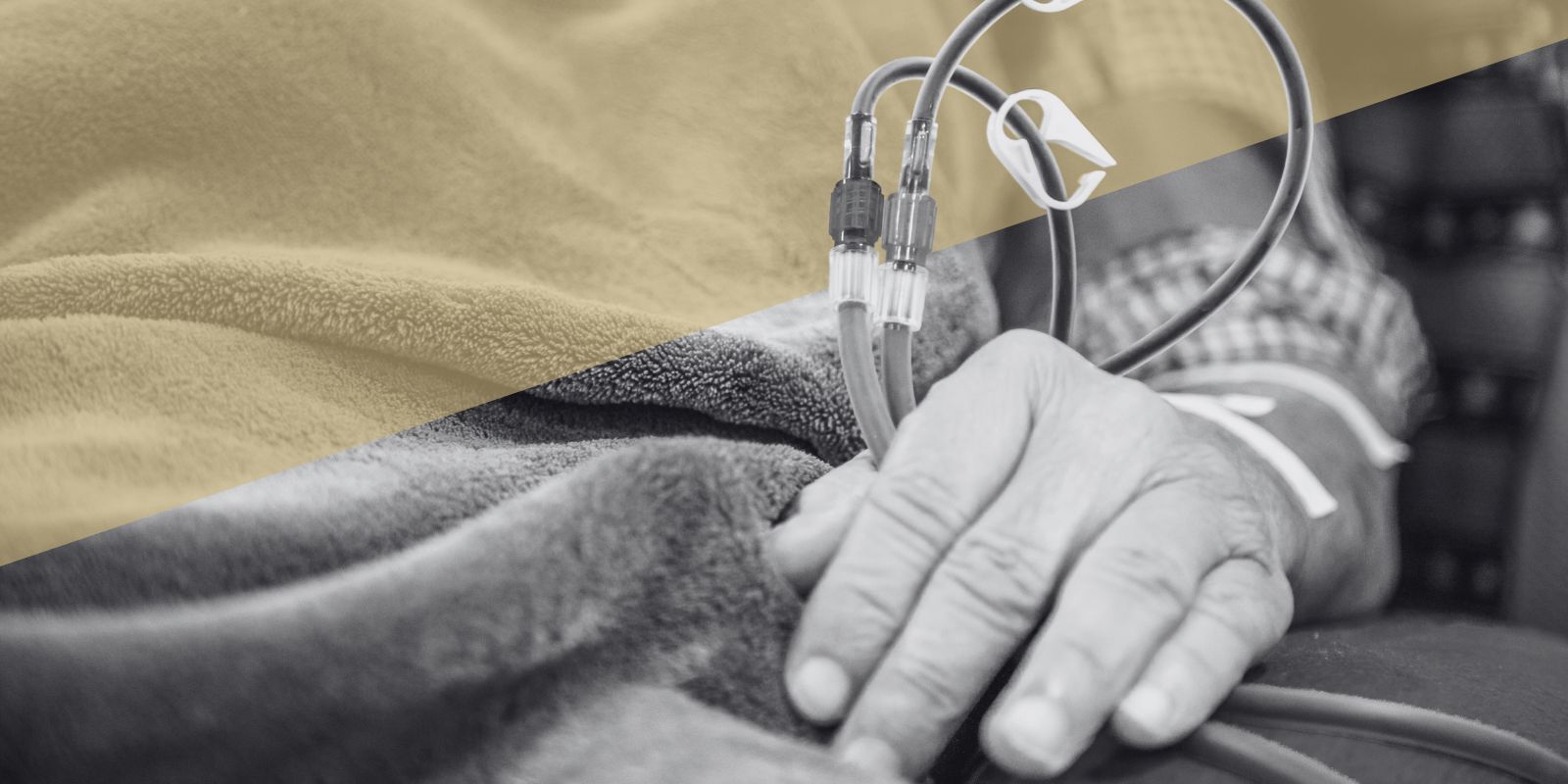It’s an unfortunate fact of health care for those who work in the medical profession — sometimes the very patients you are trying to help can turn angry, hostile, or even violent.
“We have seen an increase of hostile language on the part of patients to providers,” says Scott Laker, MD, associate dean for clinical affairs at the University of Colorado School of Medicine. “And that's not just at this institution, that's across the country. With increasing access to providers through patient health portals, telephone calls, and virtual health, all of those things are increasing the touch points. So, there's an increased volume of areas of concern. Physical violence, thankfully, is uncommon, but it's what we call a never event. We never want that to happen.”
Working with staff members in affiliated hospital systems — UCHealth and Children’s Hospital Colorado — CU School of Medicine faculty members are putting systems in place to deal with problematic behavior, whether it’s on the adult side or the pediatric side.
Under review
In partnership with UCHealth, Laker is part of the Patient Conduct and Concern Review Board, which evaluates patients who display concerning conduct and finds ways to solve the problems at the heart of the conflict. In place for just over a year, the review board is led by medical teams, who also factor in legal advice, social work review, and threat assessments from UCHealth security teams when looking at difficult cases.
“We want to figure out the driving force behind the problem,” says Laker, professor of physical medicine and rehabilitation. “Is it that the patient can't get into their visits? Do they lack proper health insurance? Do they lack medical literacy? Is it a behavioral health problem? Is it a problem on behalf of the provider, that it's just a bad fit with the provider and the patient? There are a lot of different ways for us to intervene.”
Often, it’s not the provider who bears the brunt of a patient’s dissatisfaction — it’s the office staff that schedules appointments and answers questions.
“We want to help patients understand the complexity of many situations, to have some patience and a little bit of grace,” Laker says. “It's very difficult to do that when you can't get your medicines or you're not getting the answers you need when you need them. The system can be very complicated for patients.”
Helping patients — and clinicians — thrive
When a challenging interaction is identified at a UCHealth clinic, providers or staff members can email the review board to ask them to review the case. After going through the patient’s chart and talking to providers or staff, if necessary, the board makes recommendations both for the patient and the clinic or provider.
“If there are processes we have in place that are making it difficult for patients to thrive, we work to fix those,” Laker says. “If there are things on the patient side we can help with, we’re helping them. We’ve invested quite a bit in virtual behavioral health, so our behavioral health specialists can reach out to the patient and work with them on these specific issues.”
For example, Laker says, some patients use their health portal to contact their provider up to 40 or 50 times a day — an untenable number of messages for providers or their staff to read and respond to.
“We'll have someone reach out and say, ‘Hey, we need to come up with a better way for you to get your health care needs met. This is probably not a healthy way to do that.’ Once the patients understand the system, and once they understand that we have their best interests at heart, then we can change some of those behaviors.”
Preventing crises
UCHealth and the CU School of Medicine also have partnered with the Milwaukee-based Crisis Prevention Institute to train staff on how to identify, prevent, and de-escalate crises, and they are looking at the Epic electronic medical platform to find ways to track difficult patient behavior throughout the UCHealth system. The training includes virtual options for every staff member, physician, and APP, in addition to in-person training options for clinical teams. UCHealth continues to refine its approach to preparing and protecting clinical teams and patients, and leaders anticipate additional options including staff duress technology in the future.
“It's important that our employees understand that we're taking this very seriously,” Laker says. “We have their physical and emotional health at the forefront of what we're doing and the decisions we're making. They're not out there alone on this — the institutions are dedicated to making this a healthy place to work.
Family dynamics
In the child health practice at the CU School of Medicine, leaders are also working to put much-needed systems in place to ensure patients, providers, and staff members have the support they need.
“In pediatrics, sometimes the child may be scared, the child may be escalated, or it might be the adult who is escalated,” says Shikha Sundaram, MD, MSCI, associate dean for child health. “For a provider, it can be a double whammy of feeling protective and wanting to do the right thing for the child while also protecting themselves. In child health, we recognize that there's a separate dynamic that happens between parent and child. Sometimes the behavior that's being exhibited is simply because they're scared and don't have control, don't feel heard or don’t feel safe — whatever the emotion might be.”
At Children’s Colorado, much of the risk response happens in two places: the emergency room (ER) and the behavioral health unit. In the ER, a sophisticated weapons detection system is in place, as is a state-of-the-art camera system that lets security officers see what’s happening in the area. The camera also records what’s happening so that the security team can review its response to crisis situations.
“It allows them to review any incident or breach of security that might happen,” Sundaram says. “They can look at footage from inside and outside the hospital to see if there's anything they could have done better.”
Psychological factors
On the inpatient units, where children and teenagers in psychological distress can pose a danger to themselves, as well as to providers and staff, new protocols are in place, including a Behavioral Assessment Response Team that is on call for incidents in which a patient becomes escalated.
“The team includes security, but it is led by a medical professional,” says Sundaram, professor of pediatric gastroenterology, hepatology, and nutrition. “The medical professional can give guidance to the security team on what is needed, when to step in and when not to step in. That has decreased team member injuries and outbursts and violent behavior in the behavioral health space.”
In response to a series of crisis situations on the behavioral health floor in recent years, the care team also has instituted new methods for delivering care to pediatric patients.
“We all know, from watching the evening news, that the mental health crisis in youth has escalated dramatically, particularly after COVID,” Sundaram says. “Children’s Hospital has done a lot of work in the mental health space to get back to patient-centered, patient-focused care, which included 16-plus hours of team member training. That includes trauma-informed training, where you try to offer choices, offer autonomy, explain why steps are being taken, and engender trust to bring the provider and the patient back in alignment.”
Help on the front lines
Children’s Colorado also has measures in place similar to those that protect providers and staff at UCHealth, including a tool in Epic that allows providers to document problematic behavior and share the strategies that have worked to de-escalate specific situations.
“It follows the patient over time, so it allows staff to pre-plan: ‘This might be a patient or a family that is going to have some struggles in the hospital, or that we may have had some difficult interactions with, and here are some things that have helped or haven't helped,’” Sundaram says.
Aware of their position on the front lines of patient conflicts, Children’s Colorado provides special training to nursing leadership on individual floors, giving them specific steps to handle escalated patients. A floor nurse will often excuse themself from a heated situation and bring in the nursing manager or nurse on charge, who will have enhanced skills to de-escalate the conflict.
“The message in the child health space around team member safety is that, ‘Your safety is paramount as an individual team member,’” Sundaram says. “It doesn’t matter whether you're the person cleaning the floor or the nurse or doctor in charge. If you're in a situation in which you feel unsafe, your job is to remove yourself from that situation and get help.”
Sundaram says the child health practice has worked diligently to put systems in place to identify and manage difficult or heated situations for the benefit of the patients and the team.





